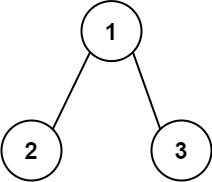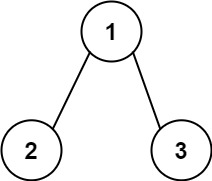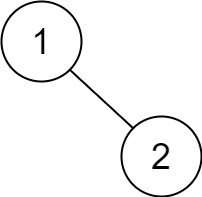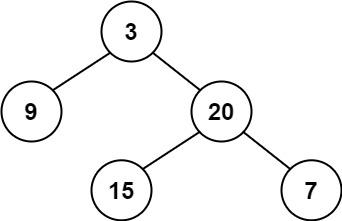You are given the root of a binary tree containing digits from 0 to 9 only.
Each root-to-leaf path in the tree represents a number.
- For example, the root-to-leaf path
1 -> 2 -> 3represents the number123.
Return the total sum of all root-to-leaf numbers.
A leaf node is a node with no children.
Example 1:

Input: root = [1,2,3] Output: 25 Explanation: The root-to-leaf path1->2represents the number12. The root-to-leaf path1->3represents the number13. Therefore, sum = 12 + 13 =25.
Example 2:

Input: root = [4,9,0,5,1] Output: 1026 Explanation: The root-to-leaf path4->9->5represents the number 495. The root-to-leaf path4->9->1represents the number 491. The root-to-leaf path4->0represents the number 40. Therefore, sum = 495 + 491 + 40 =1026.
Constraints:
- The number of nodes in the tree is in the range
[1, 1000]. 0 <= Node.val <= 9- The depth of the tree will not exceed
10.
Idea:
Use DFS Template
Solution 1:
/**
* Definition for a binary tree node.
* function TreeNode(val, left, right) {
* this.val = (val===undefined ? 0 : val)
* this.left = (left===undefined ? null : left)
* this.right = (right===undefined ? null : right)
* }
*/
/**
* @param {TreeNode} root
* @return {number}
*/
var sumNumbers = function(root) {
if (root === null) return;
let res = [];
let cur = [];
dfs(root, res, cur);
let sum = 0;
for (let num of res) {
sum += num;
}
return sum;
};
function dfs(root, res, cur) {
// exit recursion:
if (root === null) return;
// found leaf, save the number
if (root.left === null && root.right === null) {
cur.push(root.val);
res.push(parseInt(cur.join('')));
cur.pop();
return;
}
// possible solution
if (root !== null) {
cur.push(root.val);
dfs(root.left, res, cur);
dfs(root.right, res, cur);
cur.pop();
}
return;
}Solution 2: (Version 2)
var sumNumbers = function(root) {
if (root === null) return;
let res = [0];
let cur = [0];
dfs(root, res, cur);
return res[0];
};
function dfs(root, res, cur) {
// exit recursion:
if (root === null) return;
// found leaf, save the number
if (root.left === null && root.right === null) {
cur[0] = cur[0] * 10 + root.val;
res[0] += cur[0];
cur[0] = (cur[0] - root.val) / 10;
return;
}
// possible solution
if (root !== null) {
cur[0] = cur[0] * 10 + root.val;
dfs(root.left, res, cur);
dfs(root.right, res, cur);
cur[0] = (cur[0] - root.val) / 10;
}
return;
}









